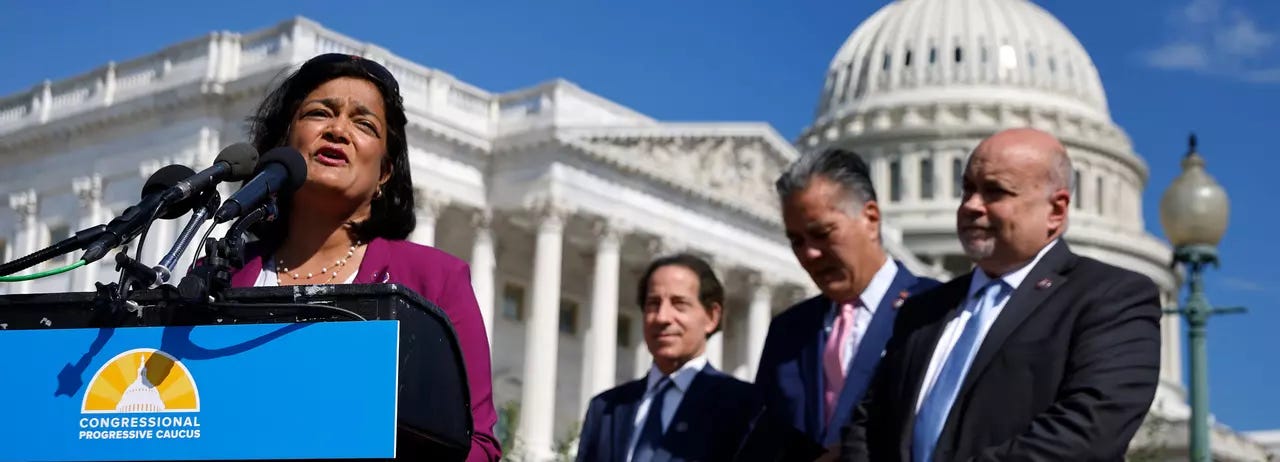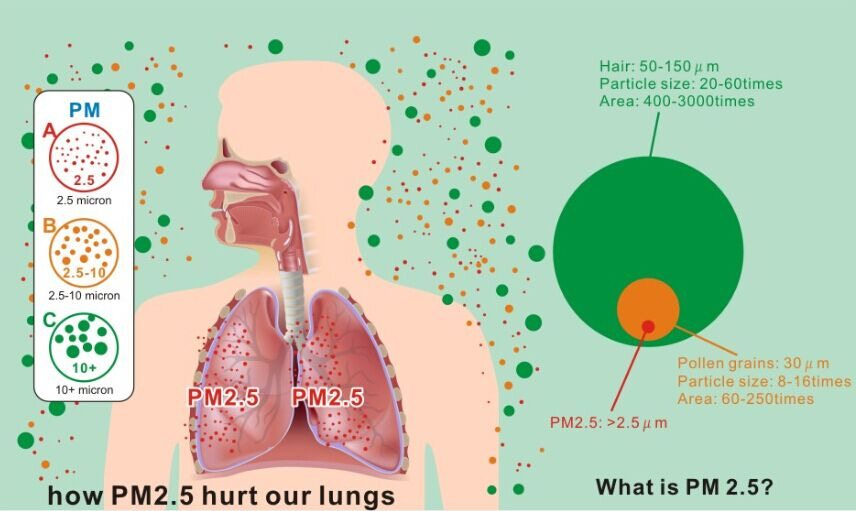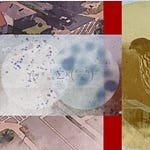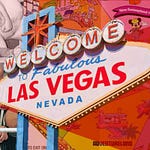Hello Interactors,
Quite a week in political news. The United States, the second biggest CO2 emitter behind China and 12th per capita, is finally making progress on climate change legislation. It’s not perfect, but it’s cause for celebration if you care about healthy air and water, the survival of life on this planet…or getting a rebate on a brand new car! Don’t get me wrong, these laws are important and necessary achievements AND they will likely fill American roads with even more cars. Yippee!
As interactors, you’re special individuals self-selected to be a part of an evolutionary journey. You’re also members of an attentive community so I welcome your participation.
Please leave your comments below or email me directly.
Now let’s go…
LET’S MAKE A DEAL
“We on the Left are very good at criticizing people”, Washington Senator Pramila Jayapal once said, “but we need to build the base to pull people to the Left.”
As the leader of the Congressional Progressive Caucus, and chief drafter of the Inflation Reduction Act, she did just that. President Biden is set to sign it into law. It’s the country’s largest climate legislation ever. Jayapal worked with a cadre of climate experts who have been waiting for this moment for decades. The law is expected to drive down inflation while dropping U.S. CO2 emissions 40% by 2030. It’s more modest than hoped, but is a HUGE first step. No surprise, not a single Republican voted for it

However, 41 Republicans did vote to fight climate change, they just won’t admit it. The bi-partisan CHIPS and Science Act (CHIPS) was signed it into law last week. It includes a $280 billion investment in American semiconductor research and development, but nearly one quarter ($67 billion) is for zero-carbon industries and climate change research. Between last year’s Infrastructure Investment and Jobs Law, CHIPS, and the Inflation Reduction Act, the United States has made serious strides to fight climate change. It’s not enough, but it’s more than ever before achieved. By investing in clean energy and renewables they not only become increasingly affordable, but they also reduce demand for fossil fuels.
Republicans also continue to vote for clean energy in their home states. Between 2010 and 2019, six of the top ten states with the largest increase in wind electricity generation were red states. Including Texas. Nearly one quarter of their energy comes from wind. This saves Texans $20 million dollars a year in energy costs. Reducing carbon, saves money. Including cars. Charging an electric vehicle (EV) today costs the equivalent of filling a gas tank with $1 per gallon gas. EVs, like traditional cars, also need safe and reliable roads.
The Infrastructure Investment and Jobs Act passed into law last November includes $110 billion in new spending for highways, roads, and bridges, compared to $39 billion on public transit. This is a HUGE investment in public transit and our roads and bridges need repaired, but the ratio of spending on roads relative to transit is roughly the same as it’s always been. Policy makers continue to believe adding more roads will ease congestion. Adding road capacity to ease traffic is like loosening your belt so you can eat more. But Americans do tend to overeat and most like their cars.
One of the big drivers of the CHIPs law were automakers. There are still hurting from supply chain snafus strangling their supply of semi-conductor chips needed to make cars. Automotive News reported, since the start of 2021, 13.5 million vehicles were cut from factory schedules due to chip shortages. Nearly 4.3 million of those were to be assembled in North America. Increasingly more chips are needed in cars as they strive for advances in autonomous driving. Bosch, a German supplier of car technology, says chips account for about $200 of value in a car sold today, but by 2030 it’s expected to grow to $800 per vehicle. Carmakers need more chips, and they need onshore guarantees they can get them. Hence the CHIPS law.
Electric vehicles are like giant phones on wheels. And like phone makers, automakers hope to one day make money on software subscriptions and services. Until then, the only way to make money is to sell large volumes of cars. Increased volumes drive prices down. Lower EV prices mean even more people can afford a car. Electric vehicles are also more affordable to own due to low energy rates and fewer repairs. But they’re still expensive. Norway, one of the wealthiest countries in the world, has the highest EV per capita of any country. But owners admit that is largely due to government incentives. Hence the U.S. focus on EV rebates and automaker deals found in the Inflation Reduction Act.
CARS CAN BE EXHAUSTING
EVs charged with clean energy not only reduce CO2 emissions, they also reduce Nitrogen Oxides (NOx). These are gases produced when fossil fuels explode. They then float into the air and become smog and acid rain. Floating in the ambient air they can trigger or compound asthma, lung disease, heart disease, and diabetes. They not only reduce birth rates they also increase death rates.
Noxious gases are only part of the air quality problem. So are particulates. Especially those measuring 10 and 2.5 micrometers or smaller. For comparison, fine beach sand is 90 micrometers in diameter, human hair is 50-80, and dust or pollen particles are about 10 (PM10). Like Nitrogen Oxides, Particulate matter at 2.5 micrometers (PM2.5) or less can also come from exploding fossil fuels.

PM2.5 is the number one environmental contributor to human mortality with disparities along racial-ethnic and socio-economic lines. One recent study took data from 2014 and found four out of the top six sources of PM2.5 are the same for POC, Blacks, Hispanics, and Asians.1 Those are: industry, light-duty gasoline passenger vehicles, construction sites, and heavy-duty diesel vehicles. The only sector where Whites were disproportionately exposed to PM2.5 were coal mining and agriculture. Getting to clean energy powered EVs will reduce exposure from passenger EVs, but construction equipment and heavy-duty vehicles are destined to be diesel for decades.
While the U.S. Environmental Protection Agency (EPA) reports a national downward trend in PM2.5, exposure rates vary by region. One recent study divided the nation into 8.6 million gridded cells to get a more accurate account of the spatial distribution of PM2.5.2 Looking at data over the last 36 years, they found the national average has indeed gone down. However, those areas with the least PM2.5 and those with the most are unchanged since 1981. This suggests the transition to EVs will most benefit those areas where PM2.5 is already low – predominantly White sparsely populated suburbs and exurbs. Meanwhile, those areas where construction and heavy-duty diesel vehicles are most concentrated – predominantly poor, ethnically, and racially diverse urban areas will continue to be disproportionately exposed to PM2.5.
But another source of PM2.5 and PM10 is non-exhaust related. It comes from dust made from car brakes, tire wear, and decomposed concrete. The heavier the vehicle, the more dust is created. Unfortunately, EVs are heavier than traditional cars due to a chassis full of weighty battery packs. However, EVs also come with optional regenerative braking. Letting off the accelerator triggers a generator that charges the battery while also slowing the car. Hitting the brakes on an EV can also engage the generator which further reduces dust accumulation. Some automakers also have ways to collect the dust as it’s generated so it doesn’t hit the pavement or fly into the air. But it’s not standard and some drivers choose to turn off regenerative braking because they don’t like how it ‘feels. But when used, it can help reduce particulate matter.
One study out of the UK shows that for urban driving, with the right amount of regenerative braking, EVs can reduce PM10 by ~26%.3 4 But on the freeway, they found “no level of regenerative braking can mitigate against the increase in PM10 due to increased vehicle weight.” Some of that increase in PM10 comes from increased tire dust from heavy passenger EVs. Vehicle weight would have to drop 22% for PM10 improvements like those found in urban environments. And while a reduction of ~27% was estimated for PM2.5 across all road types, those figures assume 90% of braking comes from regenerative brakes.
For the sake of argument, let’s assume EVs are cleaner and healthier. And through the magic of innovation, competition, and incentives more people can afford a car than ever before. Let’s also optimistically assume income disparities will lessen worldwide, more people will rise out of poverty, move to the city, and one day even own a car (many associate higher social status with car ownership). In addition, urban populations are growing exponentially – a trend expected to continue until 2050. The promise of an EV future – as aided by the passing of three new U.S. laws – will then result in increasingly more cars on the road. If you like sitting in traffic, you’re going to love the EV future. If you survive.
The United Nations reported last month nearly 1.3 million people a year die in road traffic crashes. It’s the leading cause of death among children and young adults. While interior car safety technologies reduce motorist deaths over time, they do nothing for pedestrians, cyclists, or motorcyclists. And the poorer you are the greater the chance of death. And probably worse than we know. Little data is collected in the poorest countries, and many don’t bother reporting them anyway.
While these three relatively green U.S. laws will indeed reduce CO2 emissions, they will also increase car related injuries and deaths. Worse yet, investments in an EV future only strengthens car dependency locking in perpetually more traffic, traffic related fatalities, and continued poor air and water quality. It’s a system of car dependency embedded in our culture, technology, and governments.
AUTOS MAKE THE WORLD GO ‘ROUND
Here's how this self-sustaining systems works.5 Car companies need a ton of capital to make the steel, plastics, and chips comprising a car. To offset these costs, they must sell large volumes of cars. When the economy is growing, they sell more cars because car dependent societies require more vehicles to meet the demands of economic growth. When there is a downturn, there always is, carmakers suffer because they can no longer cover the cost of production. So, what do car companies do when they’re in financial trouble? They ask their governments to bail them out and/or provide incentives to spur more people to buy more cars. Both the CHIPS act and the Inflation Reduction Act do this. And remember when Obama saved GM from bankruptcy after the 2008 financial crisis?
Democrats and Republicans both routinely save the auto industry. Why? There are many factors, but here are two. Democrats want to support union jobs that feed factory labor and Republicans want to perpetuate the rugged-individualist mystique and lifestyle that comes with private car ownership. Car addicts on both sides of the aisle believe there are two kinds of people: those who own cars and those who wish they could. Both parties also insist on a mythical infinite economic growth curve despite being limited by the natural resources and ecosystems to achieve it.
Once there are cars, roads are needed. Roads are presented as an economically easy and obvious answer to transportation efficiency. The only requirement is they be mostly free of cars. Roads with no cars is a waste of money, but roads full of cars is a waste of time. Time is money, so society accepts efforts made to ease congestion. Part of that acceptance is to prioritize the use of public roads for the movement of cars. As roads fill up, society demands more of them, and governments and road construction companies happily oblige; more union jobs for the Democrats and more space allocated to the rugged Republican individualist. Private vehicle ownership lifestyles propped up by union jobs and taxpayer dollars.
But public road space is constrained by private property. The only apparent way to make room for more cars is to take space away from others. For example, pedestrians and cyclists. Politicians, policy makers, and civil engineers (all steeped in, educated by, and benefactors of car culture) characterize this social demotion as ‘pedestrian safety’. The more cars there are on the road, and the more space they demand, the more ‘safety measures’ are put in place for pedestrians. i.e. more crosswalk paint for peds and bike lane paint for bikes. These are smart people, but an eight-year-old can tell you paint is not only a weak safety measure, it’s unjust. This paternalistic pandering signals to poor little pedalers and pedestrians that the best way to keep them safe is to relegate them to the gutter. ‘Pedalers’, ‘peddlers’, and ‘pedestrians’ – what unpleasant peasantry. Evidently, these well-intentioned people missed that day in kindergarten when most of us learned ‘sharing is caring’. To show they care, cities sometimes provide park benches at select corners and sidewalks so one can marvel at the safe roads made for those marvelous machines while breathing deathly fumes and particulate matter in dreary anticipation of witnessing a car accident. An endless stream of drivers solemnly staring through the glass of a windshield – or their phone.
It's enough to scare you into taking the bus. Good idea. Where do I catch one? Good question. How long do I have to wait? Who knows? Are they clean? Sometimes. Are they safe? Mostly. How about we just take a car? Ok. This is precisely the line of reasoning car culture conspirators have engineered. Because public dollars are transparently spent on enabling mass transit (which some argue should be a public utility…like providing safe, reliable, and clean water), it’s easy for public officials and the ‘road gang’ to point out just how expensive it is to operate. Less evident, intentionally hidden, and ridiculously complex is the public finance calculus behind the myriad of finance schemes, tax havens, kickbacks, rebates, incentives, and old-fashioned back-room dealings between hundreds of members of the ‘road gang’ and every level of government. All messaged and sold to society as an economically rational ‘public good.’ Private vehicle, good. Public transit, bad. Got it?
And when economic times turn bad, the interconnected and interdependent ‘road gang’ schemes for more financial complexity which ultimately includes more money from a government who is incented to keep them afloat. More jobs lead to more consumer spending which increases GDP which leads to more votes. But where in the budget does one find more money? The ‘road gang’ has ideas. How about pulling from an obvious expenditure they’ve already convinced the public is a bad investment by underfunding it – public transit. Especially if that money can be spent to create jobs in the auto and road construction industry. There’s a reason the infrastructure legislation is called the ‘Infrastructure Investment and Jobs Act.’ Yes, this law increased spending on transit, but it also boosted spending for the ‘road gang’. The rich get richer – more tax dollars funding more cars and more roads – and the poor stay poor – busses stuck in traffic, bus stops inconveniently placed, timetables unpredictable, busses uncomfortable, and sometimes unsafe. It not only locks in car culture, but it also locks in where people live.
Land use policies are also intent on perpetuating car dependency. Real estate companies seek land to be converted into car-oriented neighborhoods, city planners and lawmakers arrange for plenty of parking, and gas stations are strategically plopped in prized plots. TV shows, movies, books, cartoons, brochures, and advertising promote images of bucolic suburban lifestyles coupled with messages of wealth and status. The more land is developed this way, the more attractive it becomes to own a car. Sprawling and sparsely populated areas make mass transit inefficient, and cash strapped transit agencies are forced to cut service to better serve the needs of the urban carless. This makes car ownership in these areas not only a luxury, but the only viable option. That is, if you’re able to buy, own, or drive one in the first place. Those unable or willing to own a car are relegated to lower social status with little to no alternatives. Peasantry. Just as intended.
I’m sure nobody in the Progressive Caucus set out to intentionally perpetuate car culture when crafting this recent legislation, it’s just how our society has evolved. These new laws are intended to create local jobs, lower costs of living, and cut CO2 emissions. They’re not intended to dislodge a hegemonic, human slaughtering, car cabal. In fact, these laws are feeding the car beast with trendy green technology. These laws are also not intended to significantly alter how public land and road space is allocated. In fact, twelve new highways are already slated to be built.
And while transportation equity advocates were finally at the bargaining table with progressive Democrats, these laws are not intended to shift our urban areas toward equitable public space for all. Yes, the air in cities will be cleaner, but they won’t be free of harmful particulates. And the streets will most assuredly become more congested and dangerous. It seems we are sacrificing fewer lives to air pollution, more lives to traffic fatalities, so that ultimately all life on this planet has a future. It can be hard to see human sacrifice as progress, but I suspect members of the Progressive Caucus are intent on reversing this. The language in the Inflation Reduction Act begins to expose the inequities and unfairness stemming from decades of dominant car-oriented economic, societal, governmental, and physical systems. It could be the ‘road gang’ is in their sites and they’re using the widespread electrification transition as a gateway to a new possible future.
Perhaps, if given a chance in the next six years, they not only can continue transitioning to green energy, but also regreening cities. This will require the reversal of inequitable, dangerous, and unhealthy car-dependent patterns of public and private land use. The sure-fire way to slow cars in urban areas is to skinny the streets. This frees space for protected bike lanes and wider sidewalks, so wheels and feet of all sizes feel safe sharing public roadways. The more people are pulled from their cars, the more space is created for those who must drive.
Damaged ecosystems must also be reestablished, and urban landscapes and neighborhoods must be reconnected with paths that connect people with each other and their regreened city. Every human life is best lived when connected to nature, but car culture, EV or otherwise, not only isolates people from each other but from their natural environment. It’s time to make concrete jungles actual jungles.

Whether we like it not, the damaging effects of climate change are forcing human connections with nature. Floods, droughts, high winds, and heat are all natural phenomena that are best mitigated with systems of integrated nature-based solutions. Nature is our best teacher. Infrastructure funding and chips and EVs incentives will help us all to go green, but it doesn’t stop there. To ‘go green’ also means to regreen cities, and to do that requires fewer cars. The best public good a government can provide are those for the common good. Those goods are uncommon today, but Pramila Jayapal and the Progressive Caucus eased their criticality, compromised, pulled centrists Left, and made good progress on the common good. Let’s hope they set a good example and can continue to make progress.
Otherwise, 2024 could send these three steps forward two steps back. Although, when it comes to energy, red states look blue. Meanwhile more and more members of the ‘road gang’ are increasingly all-in on electrification and renewables. Who knows, maybe automaker’s next private vehicle for the rugged individualists will be a sporty electric two-seater convertible skinny enough to fit in a bike lane. If so, you can bet they’ll lobby to have that lane protected. Safety measures, and all. They’ll insist on protection from the peasantry in their old bloated, road-hogging cars and trucks.
PM2.5 polluters disproportionately and systemically affect people of color in the United States. Christopher W. Tessum, David A. Paolella, Sarah E. Chambliss, Joshua S. Apte, Jason D. Hill, Julian D. Marshal. American Association for the Advancement of Science. 2021.
Disparities in PM2.5 air pollution in the United States. Jonathan Colmer, Ian Hardman, Jay Shimshack, and John Voorheis. Science. 2020.
Electrification of Road Transport and the Impacts on Air Quality and Health in the UK. Daniel Mehlig, Huw Woodward, Tim Oxley, Mike Holland, and Helen ApSimon. Atmosphere 2021.
PM10 and PM2.5 emission factors for non-exhaust particles from road vehicles: Dependence upon vehicle mass and implications for battery electric vehicles. David C.S. Beddows, Roy M. Harrison. Atmospheric Environment. 2020.
The political economy of car dependence: A systems of provision approach. Giulio Mattiolia, Cameron Roberts, Julia K. Steinberger, Andrew Brown. Energy Research and Social Science. 2020.















Share this post